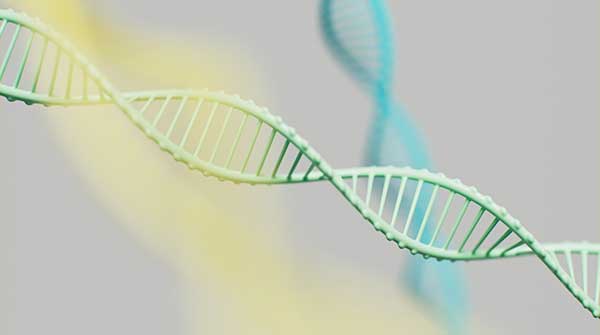Research into dark genome paves the way for innovative treatments targeting diseases associated with LINE-1 activity
In a significant scientific breakthrough, an international multidisciplinary research team has unveiled groundbreaking insights into a segment of the human genome previously shrouded in mystery. Their findings, published in the journal Nature, focus on the “dark genome,” representing a staggering 98 percent of the human genetic code whose biological functions have remained largely unknown until now.
The research provides the first-ever high-resolution images and structural details of LINE-1, a genetic element notorious for inserting itself into the human genome. LINE-1’s involvement has been implicated in various diseases, including cancer, autoimmune disorders, neurodegenerative conditions, and even the aging process.
Referred to as an “ancient genetic parasite” in the study, LINE-1 is estimated to have approximately 100 potentially active copies within each individual. Significantly, heightened LINE-1 activity often correlates with the onset and progression of various diseases.
Unlike DNA, which serves as the template for the production of RNA and proteins, retrotransposons like LINE-1 function in a reverse manner. They synthesize DNA from RNA and subsequently insert it into the genome. The enzyme responsible for this intricate process is known as LINE-1 reverse transcriptase, or LINE-1 RT.
 Matthias Götte |
 Egor Tchesnokov |
“Retrotransposons are often referred to as ‘jumping genes’ that insert themselves into our chromosomes with a copy-and-paste mechanism,” Matthias Götte, a professor and chair of the Department of Medical Microbiology and Immunology at the University of Alberta, said. “For this paper, we discovered the essential steps in this process, which could then lead us to ways to inhibit the enzyme and eventually treat those diseases.”
The research team comprised experts from various institutions in the United States and Europe and biotechnology partners. Götte’s lab at the U of A was the sole Canadian contributor to the study, which was led by investigators from Harvard Medical School and the Boston-based biotechnology company ROME Therapeutics.
In their published findings, the researchers underscored the significance of comprehending LINE-1’s structure and function: “Our integrated analyses reveal the inner workings of the molecular machine that has written nearly half of the human genome. Understanding LINE-1 structure and function is important both in evolution and, increasingly, in human disease.”
Much of the biochemical data included in the paper was provided by Götte’s lab. “We expressed and purified LINE-1 RT in the lab and then conducted biochemical experiments to understand how it actually synthesizes new DNA from RNA and inserts it back into the genome,” Götte elucidated.
Götte, renowned for his expertise in polymerases and reverse transcriptases (RTs), which function as replication engines in viruses such as HIV and HCV, is currently focusing on viruses with high epidemic potential, including Ebola, Lassa, and SARS-CoV-2. “We identified similarities between the LINE-1 RT and the HIV-1 RT, but also differences, and that will allow us to develop drugs that are more specific to this particular LINE-1 enzyme,” he said.
He concluded by commending his research associate, Egor Tchesnokov, who dedicated four years to conducting experiments for this pivotal research. “He’s extremely skilled, and I’m very grateful to have him in the lab,” Götte said.
This groundbreaking research has the potential to revolutionize our understanding of the “dark genome” and pave the way for innovative treatments targeting diseases associated with LINE-1 activity. The collaboration between global experts in structural biology highlights the importance of a strong scientific foundation for developing effective treatments for critical human diseases.
| Staff
For interview requests, click here.
The opinions expressed by our columnists and contributors are theirs alone and do not inherently or expressly reflect the views of our publication.
© Troy Media
Troy Media is an editorial content provider to media outlets and its own hosted community news outlets across Canada.

